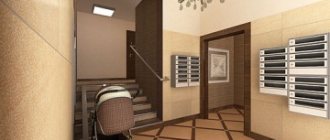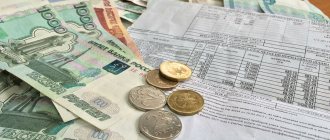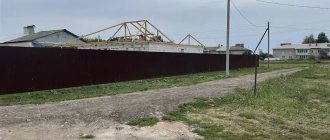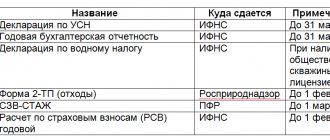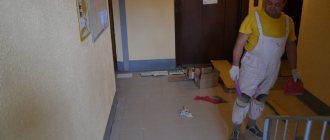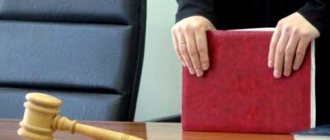When receiving receipts for housing and communal services, many come across the unfamiliar abbreviation “MOP” without decoding. This line, provided in payment documents, characterizes a certain amount of payments that is indicated in it. In this regard, questions arise related to calculating the amount of money to pay for electricity in an apartment building.
What it is
We will immediately answer the most common questions about MOP.
- What is MOP? The meaning of this abbreviation is “public places”. These are rooms in the house that can be used by absolutely everyone, but at the same time they are the property of the residents of the house;
- What is included in the MOP in an apartment building? A short list of MOP in an apartment building is the porch, corridors, stairs and stairwells, attics, basements, boiler rooms, elevators and other premises to which the residents of the building have equal rights, including the local area;
- How do I pay for common areas? The payment includes heating, electricity, cleaning and routine repairs of the MOP. In this case, the total amount of services for the maintenance of these premises is divided among the residents of the apartment building in proportion to the area of their apartments;
- What is MOP finishing? In construction, the MOP determines what repairs are made in these places: the complexity of construction work, the design project and the materials used;
- Who is responsible for maintaining common areas? Depending on the form of management, this must be carried out by the management company, the residents themselves (when directly managing the house) or the developer (if the house has not yet been transferred to the management company or HOA).
Later in the article we will discuss these issues in more detail.
Definition
This name is typical for apartment buildings. Article 36 of the Housing Code of the Russian Federation specifies the premises of an apartment building (apartment building), which are included in the MOP. In fact, this includes the entire area of the house, excluding apartments that are the personal property of their owners. Accordingly, all these places must be properly maintained. They are not part of the apartments, but require constant care and inspection by specialists.
Standards
The standards for maintaining MOP per 1 m² of apartment area vary depending on the management company and region.
This includes:
- frequency of implementation of the prescribed work (for example, once a week);
- the cost of the services provided (for example, current repair of a power plant - 3.58 rubles).
What's included
The MOP includes the areas of various premises that are in the public domain. They depend on the layout of the house and the places provided by the designer to meet the various needs of the owners.
As we see from Art. 36 of the Housing Code, the general list of MOP areas includes:
- stairs and elevators,
- dressing rooms for storing things,
- attic and boiler room,
- roof,
- porch,
- smoking areas
- elevators
- local area, etc.
All the above-mentioned places are designed to create maximum comfort for the residents of the house.
Cleaning MOP in an apartment building
Cleaning the common areas of apartment buildings is a prerequisite for the proper maintenance of common property. Employees are required to comply with the frequency and norms adopted at the legislative level.
Norms
The services of a company servicing common property include:
- ventilation of staircases on all floors;
- maintaining building structures and utility networks in good condition;
- ensuring compliance with sanitary standards at the entrance.
Maintenance of waste chutes includes the provision of the following services:
- inspection of the mine and removal of waste from waste receptacles;
- cleaning bins from loading valves;
- periodic cleaning and disinfection of the waste chute;
- timely elimination of malfunctions and minor blockages.
If damage is detected, the home's technical staff is not required to repair it themselves. It is necessary to transfer the information to the management company, whose employees are obliged to solve the problem.
The frequency of cleaning of entrances is established at the legislative level:
- The floors in the corridors, elevators and near garbage chutes must be swept daily with a wet broom.
- The area in front of the waste receptacle is cleaned daily.
- Cleaning at the entrance to the entrance is carried out at least once a week.
- Wet cleaning with a wet rag in the elevator room and entrance is carried out at least 2 times a month.
- The radiators and railings are wiped twice a year.
- Entrance windows, entrance doors and electrical panels are washed once a year.
Based on the above rules, a schedule for cleaning MOP in an apartment building is drawn up.
Payment for cleaning MOP
What is MOP cleaning on the receipt? This is a payment by residents for cleaning the entrance, which is made monthly according to the indicator in the housing and communal services receipt.
The cost of this service consists of 3 main components:
- MOP staff salaries;
- frequency and time spent on cleaning;
- staff compliance with schedule conditions;
- purchasing cleaning tools and detergents.
According to the law, MOP personnel cannot receive a salary for cleaning common areas lower than the established minimum wage. Wages are set once a year.
What to do if MOP cleaning is carried out poorly?
Poor quality of cleaning in apartment building entrances is a common problem . Debris often accumulates in common areas, cobwebs and dust form. If such a problem is identified, you should not remain silent and endure: dirt in the entrance is not only unaesthetic, but also unsafe for health.
Contact the management organization that services your apartment building. Management company employees are obliged to take measures, since housing and communal services payments include the cost of cleaning the entrances.
Make a written complaint and send it to the HOA or management company . This document does not have a strictly defined form, but it should reflect the main points, such as:
- description of the problem;
- links to legislative acts and the agreement with the management company;
- requirements for taking action.
The claim is drawn up in 2 copies: one is sent to the management company, and the second (with a note of acceptance) remains with the residents.
After receiving the complaint, the management company is obliged to send a commission that will assess the quality of the cleaning services provided. If the management company fails to act, residents have the right to send their complaint to the prosecutor's office, district or city administration, or Rospotrebnadzor. The maximum period for consideration of a claim is 30 days.
So, MOPs are common areas to which all residents of an apartment building have access . Residents are required to pay for the maintenance of such places, which is reflected in housing and communal services receipts.
If you receive payments with large bills for cleaning or electricity consumption at the MOP, then you have the right to submit a claim to double-check the correctness of the calculations. Of course, you have to pay, but you shouldn’t overpay.
Electricity cost calculation
Most owners have a question: MOP electricity - what is it? Previously, all costs for power supply to common areas were included in the cost column for “Maintenance and repair of residential premises,” but with the introduction of appropriate changes they were deducted from there.
The calculation of the payment amount is determined by the area of the apartment. Common property is divided in proportion to the area of each apartment, and not to the number of residents. After the meter readings are taken, they are sent to the management company. She makes a calculation that determines the monthly cost of “Power supply to the MOP”.
When calculating electricity spent on public needs, they rely on the following indicators:
- total electricity consumption in the house,
- total electricity consumption in all residential premises,
- electricity costs of legal entities that are connected to the public network.
Possible problems
When installing additional lighting in common areas or illegally connecting to the electrical network, all residents of the house pay the sums of money associated with the leakage of electricity.
Repayment of the bill for the electricity supply of public premises is calculated by square meters: whichever owner has the larger area pays more.
Energy loss accounting
Electricity leakage is usually associated with many unfavorable factors.
For example:
- outdated electrical wiring,
- lack of energy-saving light bulbs,
- meter breakdown,
- illegal connection to the network, etc.
To account for energy losses and reduce the amount of payment for electricity supply to the MOP, residents must assemble an initiative group. It will monitor the reading of individual meters by all residents of the house and identify illegal connections to the power grid.
Who pays and how much
All costs associated with the provision of utility services, which include the maintenance of the MOP, are borne by the owners of the premises. This is established by Article 39 clause 1 of the Housing Code of the Russian Federation. Resolution No. 354 determines that owners are required to pay for electricity supply to the MOP every month, even if they do not live in the given location. The total number of people registered in a residential premises has no relation to the lighting of public areas of the house.
Content
MOP include the provision of the necessary types of work to maintain their normal condition. The normative act establishing the procedure for the use and maintenance of places for public use is the Housing Code of the Russian Federation and Decree of the Government of the Russian Federation No. 491 of August 13, 2006.
Types of jobs:
- Identification of malfunctions of any types of equipment and their parts located on the territory of the MOP.
- Checking the functionality of lighting devices near and inside entrances.
- Inspection of fire-fighting equipment and alarm systems.
- Garbage removal.
- Landscaping in summer.
Cleaning
Common areas must be cleaned. Its regularity, cost and types of work are specified in the contract with the management company.
Cleaning typically includes:
- rodent and insect control;
- snow removal from the local area;
- grass cutting;
- roof cleaning;
- maintaining the entrance in proper condition.
If there is a garbage chute, then, accordingly, clean this place as necessary.
Repair
The timing of general capital repairs is established based on the characteristics of the technical operation of various residential buildings. However, employees of the management company, when identifying the need for repair work on equipment, elevators, staircases, etc., are required to immediately take corrective action.
Liability for non-payment
Agreements concluded with utility companies provide for liability for failure to fulfill obligations to pay for the resources provided. If the owner systematically does not pay the required amount of money, then the energy supplier has every right to sue and collect the debt from such person. As practice shows, in most cases, if the Management Company and the Homeowners Association file claims to collect a debt from the owner, the court satisfies them.
Poor awareness of what the new item that appears on the receipt means means the population is unwilling to pay for it. Every owner must know that lighting of public areas is a paid service that has always existed, but became a separate property relatively recently. Therefore, it is important and necessary to pay for it.
Tricks of management companies
The tricks that management companies resort to include adding additional services to the list of paid services. Therefore, in many apartment buildings a “house council” has been created. He checks the management company's action report.
The following are subject to verification:
- services for which funds collected from residents were spent;
- proper execution of the management agreement;
- list of services provided by the management company.
Other abbreviations
It is worth noting that the abbreviation “MOP” has many more meanings. It can stand for “rag for cleaning and washing the floor”, a special attachment for a mop or brush, which is suitable in size and type of attachment and is intended for cleaning and caring for floors.
The abbreviation can also mean “junior service personnel.” It includes such employees who do not participate in the processes of production and management of these processes. They perform maintenance functions.
Electricity fee MOP
The amount of payment is subject to calculation based on the provisions of Government Decree No. 354 of 2011.
In order for the residents of the house to be sure that the payment consists only of meter readings that take into account the electricity spent for the SOI, it is necessary to invite a specialist.
This person takes inventory of the equipment. The specialist checks whether commercial organizations located in the house are connected to the general network. If such connections are revealed during the inspection, it is necessary to influence the merchants, for example, by filing a complaint with the Criminal Code.
Electricity MOP: consumption standards and tariffs
In addition, Art. 209 and 210 of the Civil Code of the Russian Federation. Government Decree No. 354 of 2011 “On the rules for the provision...” from a legal point of view justifies the correct inclusion of MOP in the ODN. There are also acts that stipulate payment for electricity in the common areas of apartment buildings.
These include:
- Federal Law No. 261 of 2009 “On Energy Saving...”;
- Government Decree No. 491 of 2006 “On the rules for development and approval...”.
According to Government Resolution 354 of 2011, MOP electricity depends on the difference between the readings of the general and individual meter. The resulting values are divided among all residents.
MOS Electricity Concept
In the receipts for which payments for housing and communal services are made every month, a separate item is included - MOP electricity. This point of accrual should be understood as the use of this resource in general purpose areas . This term applies only to MKD.
Previously, the service in question was hidden in the line “maintenance and repairs in the house.” The changes occurred after the entry into force of Government Resolution No. 354 of 2011.
Composition of MOS electricity
In the provisions of Art. 36 of the Housing Code of the Russian Federation reflects the premises that are common in an apartment building.
These include:
- attics;
- corridors;
- elevators;
- other non-residential premises where lighting is used.
Payment for electricity is the responsibility of the owner of the residential premises. This is stated in the provisions of Art. 158 Housing Code of the Russian Federation.
Regions set their own standards for payment of the receipt line in question. However, most often, this figure is 7 kW. This value is set for houses that are not equipped with elevators. For MKDs equipped with these devices, the standard increases to 14 kW.
Important! Replacing light bulbs cannot be included in this expense line. Such work is carried out by a specialist, whose presence must be ensured by the head of the management company (MC) or homeowners' association (HOA).
Calculation of electricity charges
The calculation of MOP electricity depends on whether the house is equipped with general metering devices or not. When the meter is not installed, the formula below is used.
PE = N * PN*PC/OP , where:
- О – consumed energy;
- N – standard expenditure per citizen, determined by Government Decree No. 354 of 2011;
- PN - the size of the common premises in the apartment building;
- PC – apartment area;
- OP – the size of the entire house excluding non-residential premises.
